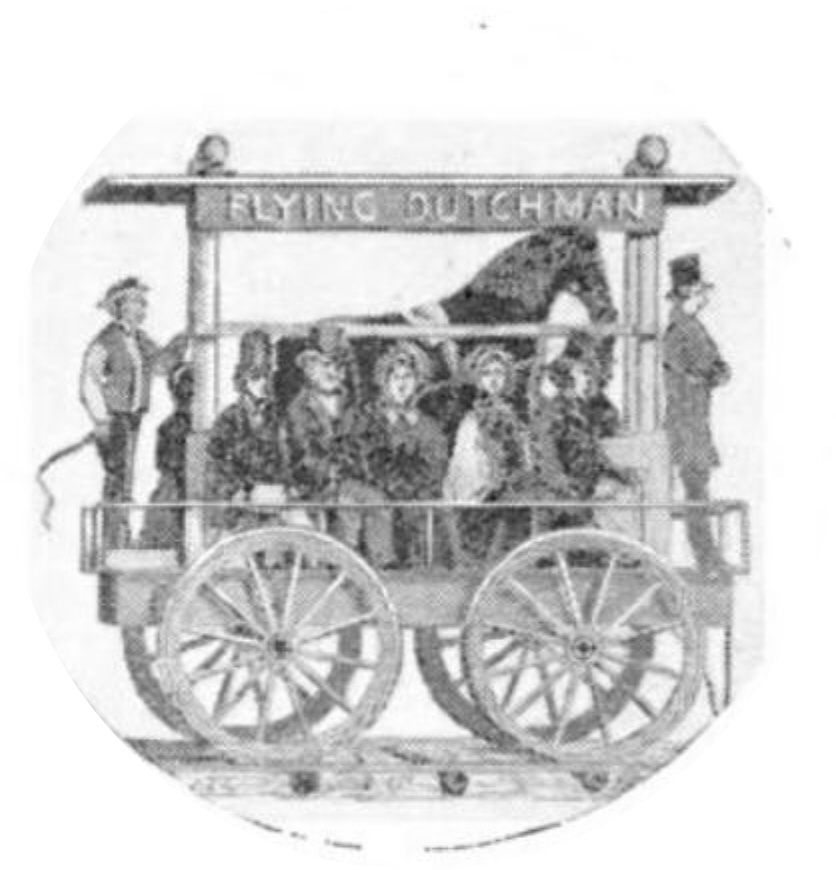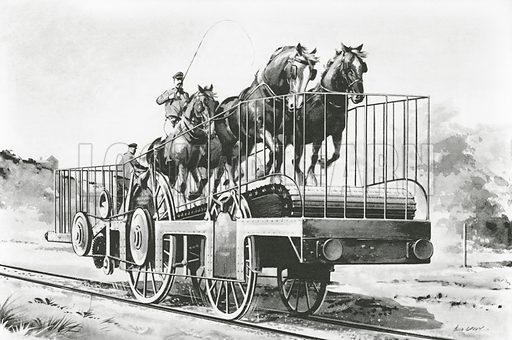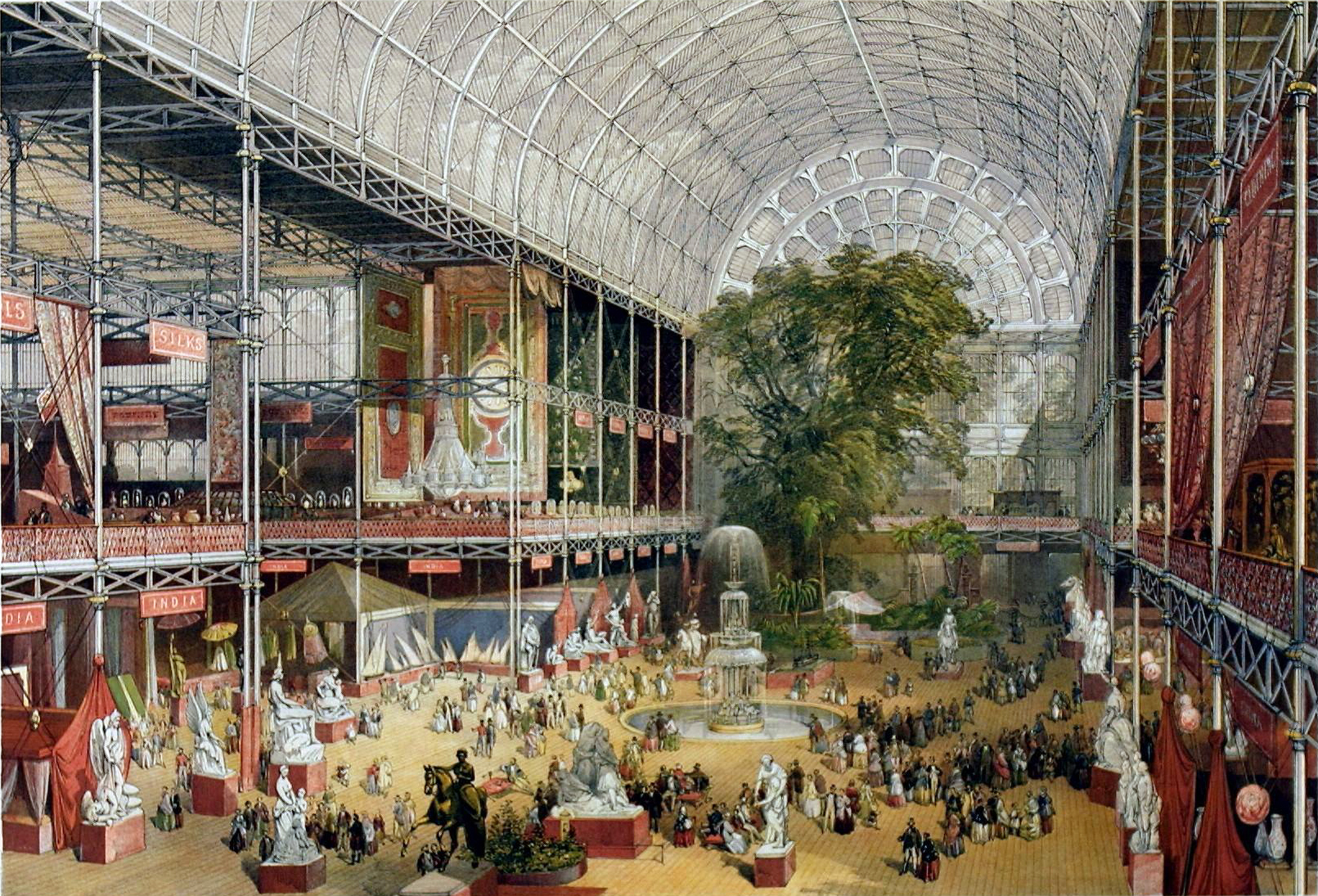|
Cycloped
''Cycloped'' was an early horse-powered locomotive, built by Thomas Shaw Brandreth of Liverpool, which competed unsuccessfully in the Rainhill trials of October 1829. The Rainhill trials The ''Cycloped'' was the only entry in the trials that did not rely on steam power, instead utilising a treadmill that was kept continually moving by a horse mounted on top. Brandreth was one of the directors of the railway and some people believed that that gave the ''Cycloped'' an unfair advantage. But the ''Cycloped'' was a primitive idea and because of its failure to generate enough speed to equal its competitors—Burstall's ''Perseverance'', Braithwaite's ''Novelty'', Hackworth's '' Sans Pareil'' and Stephenson's ''Rocket''—the ''Cycloped'' ultimately lost the competition in the trials."The Rainhill Locomotive Trials of 1829" by C F Dendy Marshall, published in the Transactions of the Newcomen Society, 1929 Vol 9. Stephenson's ''Rocket'' eventually won the trials, maint ... [...More Info...] [...Related Items...] OR: [Wikipedia] [Google] [Baidu] |
Thomas Shaw Brandreth
Thomas Shaw Brandreth, Fellow of the Royal Society, FRS (24 July 1788 – 27 May 1873) was an England, English mathematician, inventor and classicist. Early life and education Brandreth was the son of a Cheshire physician, Joseph Brandreth. He studied at Eton College, Eton and received a Bachelor of Arts, BA from Trinity College, Cambridge in 1810 as Second Wrangler, second Smith's Prizeman, and chancellor's medalist, attesting to his keen intelligence. He received his Master of Arts (Oxbridge), MA in 1813, and was subsequently elected to a fellowship at Trinity. He then entered the Inns of Court, initially at Lincoln's Inn in 1810, but he migrated to the Inner Temple in 1813 and was Barristers in England and Wales, called to the bar in 1818. He entered legal practice at Liverpool, but was much diverted from advancement by his interest in inventions. Inventions Elected a Fellow of the Royal Society in 1821 for mathematical achievements, he had by that time invented a logometer (a ... [...More Info...] [...Related Items...] OR: [Wikipedia] [Google] [Baidu] |
Impulsoria
The ''Impulsoria'' was a locomotive constructed in 1850 that was powered via a gearbox by two to four horses on a treadmill following a design by Clemente Masserano. It undertook trials in London in 1850 and was exhibited at The Great Exhibition in 1851. Description The invention of a successful mobile treadmill powered locomotive was made by Clemente Masserano from Pignerol in Italy. The idea was not new, but previous attempts in England, France, and Spain were unsuccessful. Using Masserano's designs, Impulsoria was built in Italy and transported to England. A syndicate was formed and it was trialled at the Nine Elms terminus of the South Western Railway line in London where it successfully completed a hill climb. The trials were supported by the directors of the South Western Railway and assisted by their Chief Engineer John Gooch. The device was said to be much cheaper to run than a steam locomotive. The device allowed a steam locomotive to be replaced by this vehicle, w ... [...More Info...] [...Related Items...] OR: [Wikipedia] [Google] [Baidu] |
Flying Dutchman (horse-powered Locomotive)
The ''Flying Dutchman'' was an American horse-powered locomotive operated by the South Carolina Canal and Railroad Company. It was built in New York by engineer Christian Edward Detmold and won an 1830 locomotive competition. Driven by a horse on a treadmill, it could carry 12 passengers at a speed of around . The South Carolina Canal and Railroad Company operated the ''Flying Dutchman'' on a stretch of track from early 1830. It was replaced by a steam-powered locomotive, the '' Best Friend of Charleston'', by the end of the year. History The recently founded South Carolina Canal and Railroad Company ran a competition for horse-powered locomotives in 1829. A$500 prize was offered for the best machine to be demonstrated. The ''Flying Dutchman'' was a locomotive designed and built in New York in 1829 by the engineer Christian Edward Detmold. It had a bench along either side that faced outwards, while the driving force was provided by a horse running on a treadmill in the cent ... [...More Info...] [...Related Items...] OR: [Wikipedia] [Google] [Baidu] |
Coal
Coal is a combustible black or brownish-black sedimentary rock, formed as stratum, rock strata called coal seams. Coal is mostly carbon with variable amounts of other Chemical element, elements, chiefly hydrogen, sulfur, oxygen, and nitrogen. Coal is formed when dead plant matter decays into peat and is converted into coal by the heat and pressure of deep burial over millions of years. Vast deposits of coal originate in former wetlands called coal forests that covered much of the Earth's tropical land areas during the late Carboniferous (Pennsylvanian (geology), Pennsylvanian) and Permian times. Many significant coal deposits are younger than this and originate from the Mesozoic and Cenozoic eras. Coal is used primarily as a fuel. While coal has been known and used for thousands of years, its usage was limited until the Industrial Revolution. With the invention of the steam engine, coal consumption increased. In 2020, coal supplied about a quarter of the world's primary energ ... [...More Info...] [...Related Items...] OR: [Wikipedia] [Google] [Baidu] |
Rainhill Trials Locomotives
Rainhill is a village and civil parish within the Metropolitan Borough of St Helens, in Merseyside, England. The population of the civil parish taken at the 2011 census was 10,853. Historically part of Lancashire, Rainhill was formerly a township within the ecclesiastical parish of Prescot, and hundred of West Derby. Following the Local Government Act 1894, it became part of the Whiston Rural District. The Rainhill Trials of 1829 resulted in the selection of Stephenson's ''Rocket'' as the world's first modern steam locomotive. History Early history Rainhill has been recorded since Norman times but its name is believed to come from the Old English personal name of Regna or Regan. It is thought that around the time of the Domesday Book that Rainhill was a part of one of the townships within the "Widnes fee". Recordings have shown that in the year of 1246, Roger of Rainhill died and the township was divided into two-halves for each of his daughters. One half was centred on the ... [...More Info...] [...Related Items...] OR: [Wikipedia] [Google] [Baidu] |
Great Exhibition
The Great Exhibition of the Works of Industry of All Nations, also known as the Great Exhibition or the Crystal Palace Exhibition (in reference to the temporary structure in which it was held), was an international exhibition which took place in Hyde Park, London, from 1 May to 15 October, 1851. It was the first in a series of World's Fairs, exhibitions of culture and industry that became popular in the 19th century. The event was organised by Henry Cole and Prince Albert, husband of Victoria, Queen of the United Kingdom. Famous people of the time attended the Great Exhibition, including Charles Darwin, Karl Marx, Michael Faraday (who assisted with the planning and judging of exhibits), Samuel Colt, members of the Orléanist Royal Family and the writers Charlotte Brontë, Charles Dickens, Lewis Carroll, George Eliot, Alfred Tennyson and William Makepeace Thackeray. The opening music, under the superintendence of William Sterndale Bennett, was directed by Sir ... [...More Info...] [...Related Items...] OR: [Wikipedia] [Google] [Baidu] |
South Carolina Canal And Railroad Company
The South Carolina Canal and Rail Road Company was a railroad in South Carolina that operated independently from 1830 to 1844. One of the first railroads in North America to be chartered and constructed, it provided the first steam-powered, scheduled passenger train service in the United States. Chartered under act of the South Carolina General Assembly of December 19, 1827, the company operated its first line west from Charleston, South Carolina in 1830. The railroad ran scheduled steam service over its line from Charleston, South Carolina, to Hamburg, South Carolina, beginning in 1833. Some sources referred to the railroad informally as the ''Charleston and Hamburg Railroad'', a reference to its end points, but that was never its legal name. In 1839, The Louisville, Cincinnati and Charleston Railroad Company, which had built no track of its own, gained stock control of The South Carolina Canal and Rail Road Company, which continued to operate under that name. In 1844, The S ... [...More Info...] [...Related Items...] OR: [Wikipedia] [Google] [Baidu] |
WP Flying Dutchman 2
WP or wp may refer to: Organisations * Warsaw Pact, a disbanded organization of Central and Eastern European communist states * , the Reich Party of the German Middle Class, a political party of Weimar Germany * , the Polish Armed Forces * Workers' Party (Singapore), a political party * Workers Party (United States), a defunct political party Science and technology * Watt-peak (Wp), the nominal power of a photovoltaic * Wilting point, in soil moisture determination Computing * Weakest precondition (''wp''), in computer science * Windows Phone, a smartphone operating system * WordPerfect, a word processor * Word processor, software used for the production of printable material * WordPress (wp.org), a content management system Websites * Wikipedia, an online encyclopedia * Wirtualna Polska, a Polish web portal * WordPress.com, a blog hosting provider powered by WordPress Transportation * Indian locomotive class WP * Western Pacific Railroad (reporting mark), a former American ... [...More Info...] [...Related Items...] OR: [Wikipedia] [Google] [Baidu] |
Dandy Waggon
The dandy waggon is a type of railway carriage used to carry horses on gravity trains. They are particularly associated with the narrow gauge Festiniog Railway (FR) in Wales where they were used between 1836 and 1863. The challenge The challenge on the FR was to move slate from an elevated location to a harbour for shipping, in this case from Blaenau Ffestiniog to Porthmadog, Wales. In 2006 this is a 28-minute drive over 11.9 miles (19.1 kilometers), but in 1832 it was a remote mountain area. The railway was laid on an average grade of about 1 in 80. Trains running downhill were powered by gravity, with 3 stops. The total journey time was about an hour and a half. Trains were moved uphill by horses until 1863, the journey taking almost 6 hours. It was therefore necessary to find a way to bring the horses back down again. Horse dandies George Stephenson is credited for having proposed a solution: ''build special cars for the horses to ride in on the way down'' for us ... [...More Info...] [...Related Items...] OR: [Wikipedia] [Google] [Baidu] |
Plateway
A plateway is an early kind of railway, tramway or wagonway, where the rails are made from cast iron. They were mainly used for about 50 years up to 1830, though some continued later. Plateways consisted of "L"-shaped rails, where the flange on the rail guides the wheels, in contrast to edgeways, where flanges on the wheels guide them along the track. Plateways were originally horsedrawn but, later on, cable haulage and small locomotives were sometimes used. The plates of the plateway were made of cast iron, often fabricated by the ironworks that were their users. On most lines, that system was replaced by rolled wrought iron (and later steel) "edge rails" which, along with realignment to increase the radius of curves, converted them into modern railways, better suited to locomotive operation. Plateways were particularly favoured in South Wales and the Forest of Dean, in some cases replacing existing edge rails. Other notable plateways included the Hay Railway, the Glou ... [...More Info...] [...Related Items...] OR: [Wikipedia] [Google] [Baidu] |
Water
Water (chemical formula ) is an inorganic, transparent, tasteless, odorless, and nearly colorless chemical substance, which is the main constituent of Earth's hydrosphere and the fluids of all known living organisms (in which it acts as a solvent). It is vital for all known forms of life, despite not providing food, energy or organic micronutrients. Its chemical formula, H2O, indicates that each of its molecules contains one oxygen and two hydrogen atoms, connected by covalent bonds. The hydrogen atoms are attached to the oxygen atom at an angle of 104.45°. "Water" is also the name of the liquid state of H2O at standard temperature and pressure. A number of natural states of water exist. It forms precipitation in the form of rain and aerosols in the form of fog. Clouds consist of suspended droplets of water and ice, its solid state. When finely divided, crystalline ice may precipitate in the form of snow. The gaseous state of water is steam or water vapor. W ... [...More Info...] [...Related Items...] OR: [Wikipedia] [Google] [Baidu] |
Stephenson's Rocket
Stephenson's ''Rocket'' is an early steam locomotive of 0-2-2 wheel arrangement. It was built for and won the Rainhill Trials of the Liverpool and Manchester Railway (L&MR), held in October 1829 to show that improved locomotives would be more efficient than stationary steam engines. ''Rocket'' was designed and built by Robert Stephenson in 1829, and built at the Forth Street Works of his company in Newcastle upon Tyne. Though ''Rocket'' was by no means the first steam locomotive, it was the first to bring together several innovations to produce the most advanced locomotive of its day. It is the most famous example of an evolving design of locomotives by Stephenson that became the template for most steam engines in the following 150 years. The locomotive was preserved and displayed in the Science Museum in London until 2018, after which it was displayed at the National Railway Museum in York. Design Overall layout The locomotive had a tall smokestack chimney at th ... [...More Info...] [...Related Items...] OR: [Wikipedia] [Google] [Baidu] |






